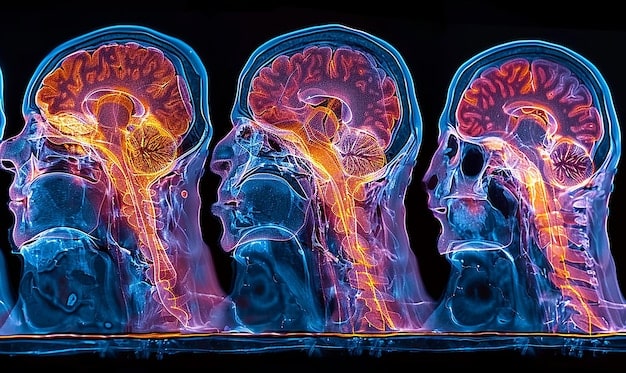ASMR in 2025: Still the Top Relaxation Trend? Exploring Autonomous Sensory Meridian Response

Autonomous Sensory Meridian Response (ASMR) remains a significant relaxation trend as we approach 2025, leveraging auditory and visual stimuli to trigger a calming, tingling sensation that many find therapeutic, influencing digital content creation and wellness practices.
Is the soothing world of Autonomous Sensory Meridian Response (ASMR) here to stay as we head into 2025, or is it just another fleeting trend in the vast landscape of relaxation techniques? Let’s dive into the tingles, the science, and the future of ASMR.
What is ASMR? Understanding Autonomous Sensory Meridian Response
Autonomous Sensory Meridian Response, or ASMR, is a sensory phenomenon described as a tingling sensation that typically begins on the scalp and moves down the back of the neck and upper spine. This sensation is often triggered by specific auditory or visual stimuli.
First coined in 2010, the term encompasses a wide range of triggers and personal experiences that have collectively formed a unique niche in the realm of relaxation and sensory exploration.
Common ASMR Triggers
ASMR triggers vary widely from person to person, but some common ones include:
- Soft Speaking: Gentle and quiet vocal tones that create a sense of intimacy.
- Tapping Sounds: Rhythmic tapping on various surfaces like wood, glass, or plastic.
- Crinkling Sounds: The sound of crinkling paper, plastic, or other similar materials.
- Visual Triggers: Slow hand movements, gentle facial expressions, and other calming visual stimuli.
Understanding these triggers is the first step in exploring the ASMR experience and its potential benefits. Whether through auditory or visual stimuli, the goal is to create a calming and soothing sensation that can help reduce stress and promote relaxation.
In conclusion, ASMR is a complex sensory phenomenon that involves a variety of triggers and individual experiences. Its ability to provide relaxation and a unique sensory experience has made it a popular topic in the wellness and digital content creation spaces.
The Rise of ASMR: From Niche Community to Mainstream Phenomenon

The journey of ASMR from a small online community to a mainstream phenomenon is a fascinating one. What started as a collection of personal experiences and shared sensations has evolved into a recognized and widely consumed form of relaxation and entertainment.
The rise of ASMR can be attributed to several factors, including the increased accessibility of online content and the growing awareness of mental health and wellness.
Early Days of ASMR
In the early days, ASMR communities were primarily forum-based, where individuals shared their experiences and attempted to define the shared sensation. These interactions helped identify common triggers and experiences, laying the groundwork for what would become the ASMR phenomenon.
Growth on YouTube and Beyond
The introduction of YouTube as a platform for content creation marked a significant turning point for ASMR. Creators began to experiment with different triggers and techniques, producing videos specifically designed to elicit ASMR. This led to the rapid growth of the ASMR community with:
- Exponential views and subscriptions.
- Dedicated ASMR channels emerging.
- The evolution of content creation strategies.
Ultimately, the impact of these channels can’t be overstated; they catalyzed the transition of ASMR into a mainstream form of entertainment and relaxation, demonstrating its appeal and versatility in the digital landscape.
From its humble beginnings in online forums to its current status as a mainstream phenomenon, ASMR’s journey reflects the power of digital communities and the growing recognition of alternative methods for relaxation and well-being.
The Science Behind the Tingles: What Does Research Say About ASMR?
Despite its growing popularity, the scientific understanding of ASMR is still in its early stages. While many people report experiencing the relaxing and tingling sensations associated with ASMR triggers, researchers are only beginning to explore the underlying mechanisms and potential benefits of this phenomenon.
Early research suggests that ASMR is a genuine neurological phenomenon that has measurable effects on the brain and body.

Neurological Studies
Studies using neuroimaging techniques such as fMRI have found that ASMR experiences are associated with increased activity in brain regions related to emotion, empathy, and social bonding, including:
- The prefrontal cortex.
- The anterior cingulate cortex.
These findings suggest that ASMR may involve the activation of neural pathways similar to those associated with social connection and emotional regulation.
Psychological Benefits
Research also suggests that ASMR may have psychological benefits, such as:
- Stress Reduction: Many individuals report feeling more relaxed and less stressed after watching ASMR videos.
- Mood Enhancement: ASMR has been linked to improved mood and increased feelings of well-being.
- Anxiety Relief: Some individuals with anxiety disorders have found that ASMR helps them manage their symptoms.
These potential psychological benefits highlight the therapeutic potential of ASMR and warrant further investigation. As research continues to expand, scientists may gain a better understanding of ASMR’s mechanisms and its role in promoting mental health and wellness.
While the scientific understanding of ASMR is still evolving, early research suggests that it is a genuine neurological phenomenon with potential psychological benefits. Further studies will likely reveal more about its mechanisms and therapeutic applications.
ASMR in 2025: Trends and Predictions
As we approach 2025, ASMR continues to evolve and adapt to changing trends in digital content consumption and wellness practices. Several key trends and predictions are shaping the future of ASMR.
From advancements in technology to shifts in consumer preferences, the landscape of ASMR is dynamic and ever-changing.
Technological Advancements
Technological advancements are expected to play a significant role in the future of ASMR. Some potential developments include:
- Virtual Reality (VR): VR could enhance the immersive experience of ASMR by allowing viewers to engage with triggers in a more realistic and interactive way.
- Haptic Technology: Haptic devices could allow viewers to feel the sensations associated with ASMR triggers, adding a tactile dimension to the experience.
Personalization and Customization
Personalization and customization are becoming increasingly important in the world of digital content. In the context of ASMR, this could mean:
- Personalized ASMR videos based on individual preferences.
- Interactive ASMR experiences that allow viewers to control the triggers and sensations.
These trends suggest a move towards more personalized and immersive ASMR experiences tailored to individual preferences and needs. By leveraging technology and data-driven insights, creators will be able to deliver more effective and engaging content that resonates with viewers on a deeper level.
In conclusion, ASMR in 2025 is poised to be shaped by technological advancements and a growing focus on personalization and customization. These trends will likely lead to more immersive, engaging, and tailored ASMR experiences that cater to individual preferences and needs.
The Dark Side of ASMR: Addressing Misconceptions and Concerns
Despite its positive reputation as a relaxation technique, ASMR has faced its fair share of misconceptions and concerns. Addressing these issues is crucial for promoting a balanced and informed understanding of ASMR.
From concerns about sexualization to questions about its legitimacy as a therapeutic tool, there are several aspects of ASMR that warrant careful consideration.
Misconceptions About ASMR
One of the most common misconceptions about ASMR is that it is inherently sexual. While some ASMR triggers may involve intimate or sensual stimuli, the vast majority of ASMR content is not intended to be sexually arousing. Here’s a further explanation:
- ASMR content often focuses on providing relaxation and sensory pleasure.
- It relies on specific auditory and visual stimuli.
- The focus is on creating a calming and soothing experience.
Addressing Concerns
Another concern surrounding ASMR is its potential use for manipulative or exploitative purposes. As with any form of media, there is a risk that ASMR content could be used to influence or control viewers. Therefore:
- Users should exercise caution and critical thinking when engaging with ASMR content.
- Creators have a responsibility to create ethical and responsible content that does not exploit viewers.
Ultimately, ASMR is not inherently harmful or exploitative. However, it is important to approach it with a critical mindset and be aware of the potential risks and concerns associated with its use.
In conclusion, addressing misconceptions and concerns surrounding ASMR is essential for fostering a balanced and informed understanding of this phenomenon. By dispelling myths and promoting responsible content creation, we can ensure that ASMR remains a positive and beneficial tool for relaxation and well-being.
Making ASMR Work for You: Tips and Best Practices for Relaxation
For those interested in exploring the potential benefits of ASMR, there are several tips and best practices that can help maximize its effectiveness as a relaxation technique.
From identifying your personal triggers to creating a relaxing environment, there are several factors that can influence the ASMR experience.
Identify Your Triggers
The first step in making ASMR work for you is to identify the types of triggers that resonate with you personally. Some people may find soft speaking and gentle hand movements relaxing, while others may prefer tapping sounds or visual stimuli. To do so effectively, consider:
- Experiment with different types of ASMR content to see what triggers work best for you.
- Pay attention to the sensations you experience when exposed to different triggers.
- Note which ones elicit the tingling and relaxing sensations associated with ASMR.
Create a Relaxing Environment
Creating a relaxing environment is also essential for getting the most out of ASMR. This may involve:
- Finding a quiet and comfortable space where you can relax without being disturbed.
- Dimming the lights and minimizing distractions.
- Using comfortable headphones or speakers to enhance the auditory experience.
By following these tips and best practices, you can maximize the effectiveness of ASMR as a relaxation technique and experience its potential benefits for stress reduction and well-being. Embrace experimentation, prioritize comfort, and be mindful of your body’s responses to fully unlock the transformative power of ASMR.
By identifying your personal triggers and creating a relaxing environment, you can maximize the effectiveness of ASMR as a relaxation technique. Experiment with different content, prioritize comfort, and be mindful of your body’s responses to fully unlock the transformative power of ASMR.
| Key Point | Brief Description |
|---|---|
| 🎧 Understanding ASMR | ASMR involves tingling sensations triggered by auditory/visual stimuli. |
| 📈 ASMR’s Rise | Evolved from niche forums to mainstream relaxation and entertainment. |
| 🧠 ASMR Science | Studies link ASMR to emotion and social bonding brain regions. |
| 🔮 ASMR in 2025 | VR, haptic tech, and personalization will likely enhance ASMR. |
Frequently Asked Questions About ASMR
▼
ASMR stands for Autonomous Sensory Meridian Response. It is a term used to describe a tingling, static-like sensation in response to specific auditory or visual stimuli.
▼
Experiment with various types of ASMR content, such as soft speaking, tapping, or visual triggers, to identify those that resonate most with you and produce the desired tingle.
▼
While research is ongoing, initial studies suggest ASMR activates brain regions related to relaxation, emotion, and social bonding, offering potential psychological benefits and stress reduction.
▼
For optimum relaxation, try experiencing ASMR in a quiet, comfortable setting. Dim the lights, minimize distractions, and use headphones to improve the auditory experience.
▼
There is a risk that ASMR content may be utilized for manipulative or exploitative objectives, as with any media, and it is not meant to replace expert medical assistance.
Conclusion
In conclusion, as we look towards 2025, Autonomous Sensory Meridian Response is positioned to remain a significant relaxation trend, powered by technological innovations like VR and haptic feedback, alongside evolving consumer preferences for personalized, comforting content. From its scientific foundation to practical applications, ASMR’s growth trajectory indicates its enduring appeal and continued value in the wellness landscape.






